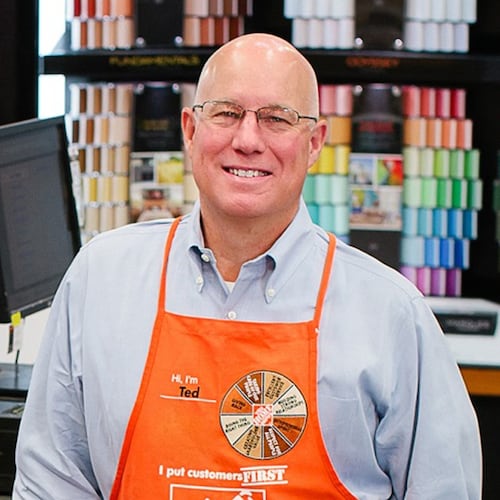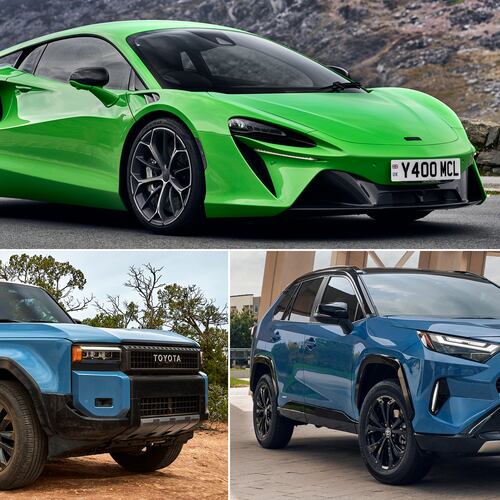It had been true for decades, and everybody at Coca-Cola Co. knew it: Young guys don't like diet soft drinks. Diet, as one executive put it, was a "four-letter word" for men aged 16-24.
"There was a clear gap in what we were offering," said Katie Bayne, Coca-Cola North America's president and general manager of sparkling beverages, the industry's preferred term for soft drinks. "No one was giving this younger male target what they wanted."
Almost 10 years ago, Coke executives set out to change that, and in 2005 they launched a brand that defied the odds: Coke Zero.
The brand's U.S. sales have consistently increased as the soft drink category has shrunk. Coke Zero has proven that guys looking to "spend" their calories on burgers and hot dogs rather than soft drinks will drink diet cola.
As long as it wasn't called, you know, "diet."
It needed to taste a lot like regular Coke, and its packaging needed to evoke a subconscious masculinity. (Black -- good, white -- bad.) And its marketing needed to be a little slapstick and irreverent -- more evocative of Bud Light commercials than typical Coca-Cola ads.
Coke Zero has not just grown, but notched 17 straight quarters of double-digit sales increases. It is now sold in 130 countries, including powerhouse markets such as Brazil and Mexico. It is perhaps the most successful new soft drink of the last decade, a billion-dollar brand mentioned in the same breath as Coca-Cola, Diet Coke, Sprite and Fanta.
In the U.S., its sales are about six times larger than PepsiCo's counterpart drink, Pepsi Max, which is getting an infusion of marketing dollars and three Super Bowl commercials this winter. Pepsi Max was introduced in 1993 in international markets and in the U.S. in 2007.
"A lot of us kind of presume that the big companies aren't that good at innovation," said Gerry Khermouch, editor of Beverage Business Insights. The designers of Coke Zero "played their cards very well against a lot of skepticism. Strong, consistent growth over a long period does suggest they have a bona fide hit on their hands."
Despite the accolades, Coke Zero stumbled out of the gate. Big success came only after Coca-Cola adjusted on the fly.
The drink was initially marketed with a tagline of "everybody chill" -- a nice but vague emotional message. It didn't work. Consumers were left confused about what the brand meant. The Zero brand team had studied beer ads for clues to appealing to young adult men, but the team hadn't clearly explained Zero's reason for being.
"It was humbling," said Pio Schunker, senior vice president of integrated marketing content at Coca-Cola North America. "We had to rewind back. People really wanted to understand -- what is this? What is Coke Zero?"
The company sought to boil down Coke Zero's intrinsic value with a message that it delivered "real Coke taste, zero calories." Five years on, the marketing pitch remains the same.
Coke Zero was initially sold in white cans and bottles. In the feedback from consumers, Coca-Cola researchers noticed a problem. The white packaging connoted diet drinks, and among the coveted young male demographic, diet connoted "female." The company quickly borrowed an idea from its Australian division and swathed Coke Zero in black. Within six months, the new marketing and packaging were in place, and the brand took off.
In 2009, a year in which overall soda sales shrank by about 2 percent, Coke Zero sales jumped 20 percent in the U.S., from 97 million cases to 116 million, according to trade journal Beverage Digest. Among big soft drinks, only Diet Mountain Dew, Diet Dr Pepper, Crush and Coke Zero posted gains. The brand claimed the No. 12 spot among carbonated soft drinks in the United States, up from No. 15 a year before. Its sales and market share have continued to grow this year.
Tom Pirko, president of California consulting group Bevmark, said the soft drink market was receptive to Coke Zero's proposition: that you could trim calories without sacrificing taste. "In a very lethargic market," he said, Coke Zero was "new and improved."
From the early days of the brand, Coca-Cola linked Coke Zero to some of its biggest marketing events -- NASCAR races, the NCAA Men's Final Four and action and sci-fi movies such as "Avatar" and the James Bond vehicle "Quantum of Solace." This year, there will be marketing tie-ins with "Tron: Legacy."
"We've given this brand some access that only the Coke trademark could give it," said Shay Drohan, Coca-Cola Co.'s senior vice president of sparkling brands. "Going big or going home was the approach we used."
Marketing can take a brand so far, but it has to deliver on the promise. Fans say Coke Zero tastes much like Coca-Cola Classic, albeit perhaps a little sweeter. But it drops the calorie count to zero with a sweetener blend of aspartame and acesulfame potassium, also known as Ace-K.
"They got the taste right," said Michael Bellas, CEO of Beverage Marketing Corp. "Taste has historically been tricky with diet soft drinks."
John Langlois, a retiree who lives in Stone Mountain, started drinking Coke Zero when his doctor told him to cut calories. He prefers regular Coke, but called Coke Zero a good compromise.
"I miss the buzz Coke has, but it's the next best thing" said Langlois, 70.
"Most of the guys that I have talked with, I don't know if it's psychological or what, but they never got into Diet Coke like the women did," he said. "I just couldn't get the Coke taste."
Coca-Cola executives predict continued growth for Coke Zero, based on the expanding popularity of diet and "light" drinks. When Diet Coke launched in 1982, diet drinks made up only 1 percent of sales at Coca-Cola Co. Today, that number stands at 42 percent, and the company expects it to hit 50 percent by 2020. Plus, the brand's sales are especially strong among Hispanics and African-Americans, two growing demographics.
In the 16-24 age group, about 60 percent of Coke Zero's drinkers are male. But Zero also gets a lot of sales from men 35 or older, whose calorie-trimming ways might otherwise force them out of regular Coca-Cola. Coke Zero has managed to avoid the boom and bust cycle that can plague line extensions. Think Coca-Cola C2 and Vanilla Coke.
Coke Zero "shows a well-conceived, well-marketed soft drink can grow in North America," said John Sicher, editor and publisher of Beverage Digest. "Coke can legitimately claim that Coke Zero was a success story in a somewhat moribund category."
Now, Coca-Cola is trying to get Coke Zero into more soda fountains and restaurants, which remain the largest opportunity for the brand in North America.The brand is in Outback Steakhouse, Chick-fil-A and some McDonald's and movie theaters, but the company is urging its retail customers to make the brand more widely available.
"We're going to ask them to take that leap of faith," said Bea Perez, chief marketing officer for Coca-Cola North America.
Get the news faster! Follow the AJC's beverage coverage on Twitter here.
About the Author
Keep Reading
The Latest
Featured

